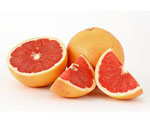The Correct Administration of Antihypertensive Drugs According to the Principles of Clinical Pharmacology
Posted by: admin on: April 18, 2011
Control of cardiovascular (CV) risk factors, particularly hypertension, is still unsatisfactory, resulting in excess CV morbidity and mortality worldwide. CV risk is linearly associated with an increase in blood pressure (BP) values, and clinical studies have clearly demonstrated that BP lowering represents the most effective means of preventing CV events. However, while BP reduction is a fairly easy target, BP normalization is much more difficult to achieve, and adequate BP control (<140/90 mmHg) is attained only in a small percentage of the hypertensive population.
One of the main reasons for the lack of efficacy of antihypertensive pharmacological treatment is that very often drugs are not administered at the correct dosage. In this review, we discuss the importance of using clinical pharmacology to guide treatment of hypertension.
The prescription of a drug for the treatment of hypertension should take into consideration the potency of the drug, i.e. the degree of BP reduction required, and the duration of action of the drug, i.e. the need to cover the dosing interval (possibly 24 hours) in a homogeneous way.
This is especially the case for angiotensin-converting enzyme (ACE) inhibitors, compounds characterized by a flat dose-response curve. The significance of this flat dose-response curve is that a low dose of an ACE inhibitor has the same potency as a high dose but a shorter duration of action
In contrast, other drug classes, including calcium channel antagonists, diuretics, and β-adrenoceptor antagonists, can be used at different dosages in order to modulate their hemodynamic effects.
Thus, it is important to be aware of the clinical pharmacology of antihypertensive drugs in order to choose not only the class or the molecule best suited to the clinical characteristics of the patient, but also the correct dosages to ensure effective and homogeneous 24-hour BP reduction.
Ref: http://www.ingentaconnect.com/content/adis/acv/2011/00000011/00000001/art00002?crawler=true
Search
- drchasrani: Difficult to get such a data, authenticated at that. Try Times of India online library
- rakesh pore: hi, where can i get genuine information about "10 most common drugs sold in india?" i want it for a local project
- nilesh dutta: sir, Plz give detail about MBA Sports Management Thanks and Regards


Leave a Reply